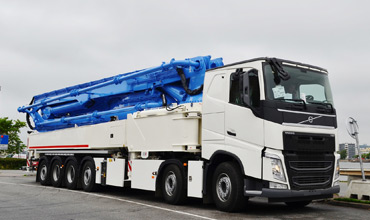
Concrete Pump isn't just for big commercial construction projects. Pumping concrete instead of transporting it in a wheelbarrow can save time and money for even a small patio project. A project manager should consider concrete pumping on the construction site for various reasons.
Concrete pumping has several advantages over other technologies. We'll start with some background information on concrete pumping and discuss how concrete pumping can help you save money.
You may assume it's just “concrete from a pump”. True, but it's an exaggeration. Two pistons are installed in the machine's cylinders. A hopper attached to the device receives liquid concrete. The first piston pushes air into the first cylinder, drawing liquid concrete from the hopper. At the same time, the other piston makes the concrete out through a discharge pipe. The two pistons then switch roles. This allows for uninterrupted concrete flow. The cylinders are exchanged using a valve between the hopper and the discharge pipe.
Concrete pumps are becoming increasingly common. The sector has expanded 14% in the last two decades. The total worth of the industry is’ evaluated at 1.25 million pounds. By 2021, it is predicted to have grown by approximately 25%.
In a boom pump, an articulating robotic arm deposits the concrete called a “boom”. The boom is controlled using a remote. It can quickly pour enormous amounts of concrete faster and more precisely. The robotic arm can also perform electrical and pipe maintenance tasks.
Steel or rubber hoses are attached to the machine in a stationary pump, mounted on a trailer. The pump's reach is extended by connecting multiple hoses. Trailer pumps are ideal for smaller operations that require a reduced volume of concrete deposition. These are used for sidewalks and swimming pools, and small domestic projects.
It's not always possible to get the mixer near enough to the area where the concrete needs to be poured. This is prevalent on building sites in urban areas or residential areas. If your site is inside a building, at an alleviated height, or underground, you'll need to use the concrete pump.
The professional concrete pump helps in saving manual labour and keeps the cost in check.
A concrete pump can make the task a hundred times easier and more convenient and even uniform
A concrete pump offers faster work and might get you back on track if your project runs late.
Concrete pumping has numerous advantages, including:
• Concrete can be placed at inaccessible distances and heights.
• It works great even in unfavourable weather conditions.
• One can accelerate and retard the speed of concrete deposition
• It is a less labour-intensive process
• It may enable you to access regions that are inaccessible by crane.
• Because of the time saving factors, you may be able to finish work on many project sites in a single day, lowering your prices and expenditures.
A concrete pump can handle any project, no matter how big or small. According to most project managers, concrete pumping on building sites can save money in the long term. Contrary to popular belief, the labour and time savings of using a concrete pump outweigh any additional costs. When working on challenging construction sites, concrete pumping from West Concrete London may be the only practical choice available.